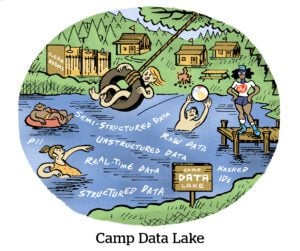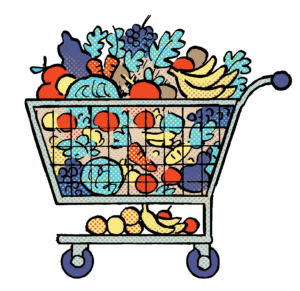“The Complete Guide to CDPs” is presented by mParticle.
“The Complete Guide To CDPs” is part 1 in a multipart series on the rise of the CDP and is an independent editorial report.
The customer data platform (CDP) is the new “it” acronym, an emerging technology commanding a recent deluge of analyst and investor interest of late.
The CDP category is largely undefined – no specific features and functions definitively characterize a CDP.
“People are defining it the way it fits their organization and needs,” said Abhi Patil, senior director of customer analytics and loyalty data management for Air Canada.
But in general, CDPs contain a business’s customer data and allows that data to be accessed across departments, including ecommerce, analytics, marketing and customer experience.
“[Air Canada] intended our CDP to be a place where we could do holistic analysis of data across all touch points, and to be able to engage customers appropriately as a result,” said Patil.
The CDP use case is more expansive than other marketing and ad tech platforms. It’s not just a customer record repository, like CRM. And it doesn’t build audiences for paid media, like data management platforms. It also does more than just manage site tags, like tag managers.
“Any time you have a direct interaction with a consumer, it’s a CDP use case,” said Omer Artun, founder and CEO of early customer data platform AgilOne. “The intent is often to understand the behavior, value and engagement level of a customer.”
And first-party data is gaining more sell-in across the C-suite as companies use customer data to create a competitive advantage.
What does a CDP do?
A CDP solves several business challenges.
First, it uses first-party data and identity resolution to build a consolidated customer journey map.
In the past, if a consumer signed up for an email newsletter, created a customer support ticket with a call center, signed up for a loyalty card or created an account for ecommerce and made a purchase, each of these interactions would be siloed in separate systems.
While data warehouses can store vast quantities of data, they can’t execute against it in real time, like a CDP is meant to do.
“What drives the CDP is the need for cross-engagement and platform interaction in real time,” said Yannis Kotziagkiaouridis, global chief analytics officer for Wunderman. “Latency is very important because you need to make real-time decisions. And you’re not going to do that by drawing from your data warehouse.”
A CDP promises to unify disparate data sets like offline, digital and customer service information, ensure data hygiene across systems and create a clean database of authenticated users.
That function is perhaps one of the most important jobs of a CDP, and what distinguishes the technology from platforms like DMPs.
“CDPs are for owned channel personalization and DMPs are for paid channel optimization,” said Martin Kihn, research director at Gartner. “CDPs handle known IDs and PII while DMPs are organized around anonymous IDs and eschew PII. When anyone asks me the main difference between all the things called CDPs and DMPs, I say, ‘CDPs don’t deal with advertising.’”
Air Canada’s Patil agreed.
“DMPs can’t hold PII data,” he said. “When you map IDs back from different systems and try to correlate it to a single ID in a centralized system, that’s what I’d say is the No. 1 characteristic of a CDP. Brands need to own their data and connect data coming from different ecosystems, linked back to a single customer address if possible.”
Though CDPs aren’t designed specifically to optimize ads, marketers could use it to improve their paid media execution.
By keeping all first-party and known customer data in one place, marketers gain better intelligence to inform customer communications.
But a CDP isn’t just a data repository. The system should provide an analytical layer to make sense of the data it holds. So a CDP is only as good as its analytical capability, said AgilOne’s Artun.
“You don’t want a dumb hub,” Artun said. “If all of your data is in one place, you can drive more analysis around the lifetime value of a customer and figure out what product they most frequently buy or if they fly business class or not, for example.”
CRM and marketing automation all started as B2B tech, which slowly morphed to accommodate B2C clients.
But a CDP is, from the ground up, architected for B2C clients.
“B2B CRM is all flat-file, batch-based and can require a lot of manual entry,” said Michael Katz, co-founder and CEO of the CDP mParticle. “B2C CRM has to be much more dynamic, include support for real-time streaming and processing, and be integrated with lots of different systems across an entire stack.”
For instance, beyond ingesting website and mobile data, mParticle hooks into OTT devices like Roku and Chromecast, and it’s building support for emerging voice platforms like Alexa.
The historic challenge with CRM systems is that they’re limited mostly to email and offline data, said Michael Schoen, VP of marketing solutions for Neustar.
Although CRM got an upgrade when platforms like Google, Facebook and Amazon started allowing email matching between their audience data set and businesses’ customer records, for the most part the output was limited to media use cases.
Why a CDP isn’t a DMP
DMPs originated as cookie syncers for digital advertising, but they’ve never been able to connect online data with offline data systems – especially those platforms which are industry-specific, like airline revenue systems.
“To the extent that DMPs had any understanding of identity, and most of them don’t, you had an understanding of the types of devices that were interacting with your content online but couldn’t connect it with any of your customer information offline, which created this need for a middle solution,” Neustar’s Schoen said.
Of course, Neustar has a so-called identity DMP, which connects CRM data to digital interactions.
Although Neustar doesn’t call its platform a CDP, per se, it does have CDP-like capabilities because it can connect offline customer intelligence with digital data sets.
And Neustar is fielding some requests for heavier-duty customer data projects including offline data, Schoen claimed, which he says CDPs rooted in web and ecommerce aren’t necessarily equipped to handle.
While DMPs are a mature market and are dissolving into marketing clouds and combining with demand-side platforms, Gartner’s Kihn points out that the CDP market is very immature.
And even though CDPs are becoming a market category unto themselves, there are still many different configurations.
Customer use cases:
Air Canada
Air Canada is in the process of creating a digitally driven loyalty program with its agency, Wunderman. The goal is to have a single customer data platform enabling a unified view of all of Air Canada’s data assets by 2020.
“We wanted to have all of our data in one place from the time customer touches AirCanada.com, buys a flight using a travel agency, checked in on their mobile app or bought something in-flight,” said Air Canada’s Patil. “The journey of the customer is not just when they buy the ticket.”
So Air Canada is working with Wunderman’s data and analytics teams to jointly build a state-of-the-art analytics engine and CDP to better understand and take action against customer signals.
“We are building an ecosystem of signals we can activate,” said Wunderman’s Kotziagkiaouridis.
Those signals are designed to predict certain behaviors, the likelihood of a customer to travel soon and their destination. The CDP would not only factor in loyalty and transactional data, but exogenous factors like weather conditions.
Tumi
Samsonite’s luxury luggage brand, Tumi, deployed a CDP about 18 months ago with the help of AgilOne to create a database system of record for its entire company.
Its CDP consolidates data across online and in-store sales, sales through wholesale partners, email operations, customer service, warranty and repair, social and site browsing data, according to Charlie Cole, Tumi’s chief digital officer.
“DMPs are limited to cookies and CRM is typically limited to sales, while CDPs allow you to consolidate far more data,” Cole said. “It is our one-stop shop for data in our organization.”
The brand uses the system as a repository for customer information, but also layers on predictive analytics with machine learning, using AgilOne for customer segmentation.




















